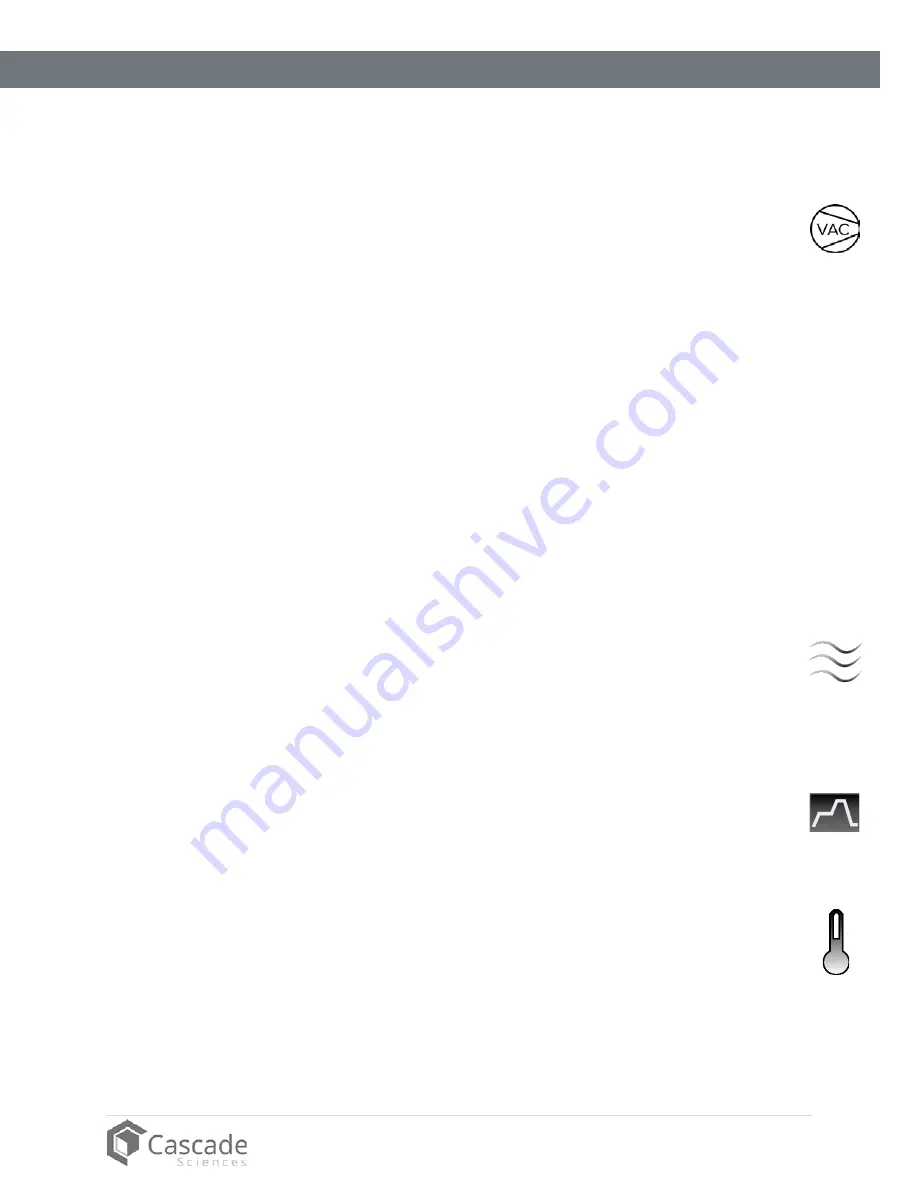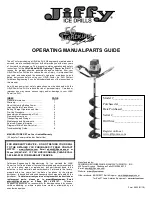
37
|
P a g e
cascadesciences.com
|
Tel. 503 847-9047
OPERATION
T
HEORY OF
O
PERATION
Vacuum
TVO ovens are intended for use in closed-cycle, under-vacuum applications.
Vacuum is supplied by an external vacuum supply system (a pump or building system) connected to
the vacuum port on the back of the oven. Vacuum levels obtained in the oven chamber are
dependent on pump type and performance, valve settings, and the nature of the application or
process, including the volume of materials outgassed.
The current chamber atmospheric pressure is displayed on the Vacuum Gauge on the main control
panel.
The chamber must be sealed and evacuated at the start of a vacuum baking application. The oven is
not built to operate with the chamber exposed to free atmosphere. Running the oven with the door
or the vent open may risk destroying the vacuum pump and damaging the integrity of the oven
chamber.
Vacuum pumps and door gaskets should be selected based on the application or process. Gasket
types are resistant and vulnerable to different chemicals, and vacuum pumps vary in suitability and
safety depending on the outgassed byproduct types and moisture level produced in the oven
chamber.
Gas Backfill
A gas supply can be connected to the vent intake port (backfill inlet) located on the back of the oven.
Nitrogen or another inert gas may be used to backfill an evacuated oven chamber to avoid
particulate contamination or oxidation. The maximum allowed backfill pressure is 15 psi of delivery at
the inlet port.
Heating Options
The oven can either heat to and run at a constant temperature set point or execute a programmable
multistep heating profile with ramp up, heat soak, and ramp down intervals.
Heating in a Vacuum
In conventional ovens, powered elements transfer heat into the chamber air. The heated air then
circulates by natural convection or blower fan action, and surrounds the product on the shelves,
gradually bringing it to temperature. In a vacuum oven, heat transport takes place primarily by
conduction. The oven heating elements are located inside the chamber walls, which in turn transfer
heat to the shelves. Each shelf then transports heat to the products or samples resting on it.
Direct radiant heating through infrared emission in a vacuum environment provides poor
temperature uniformity compared to conductive heating.
Summary of Contents for CVO-2-HT
Page 1: ...Vacuum Ovens CVO 2 HT CVO 5 HT Installation Operation Manual...
Page 6: ...6 P a g e cascadesciences com Tel 503 847 9047 TABLE OF CONTENTS...
Page 8: ...8 P a g e cascadesciences com Tel 503 847 9047 CERTIFICATIONS...
Page 12: ...12 P a g e cascadesciences com Tel 503 847 9047 UNIT SPECIFICATIONS...
Page 16: ...16 P a g e cascadesciences com Tel 503 847 9047 INTRODUCTION...
Page 22: ...22 P a g e cascadesciences com Tel 503 847 9047 RECEIVING YOUR OVEN...
Page 32: ...32 P a g e cascadesciences com Tel 503 847 9047 GRAPHIC SYMBOLS...
Page 71: ...71 P a g e cascadesciences com Tel 503 847 9047 REPLACEMENT PARTS...
Page 72: ......
















































